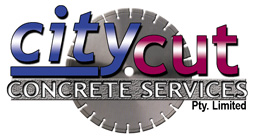How To Control Dust When Concrete Cutting
Construction workers and anyone who ever performed concrete cutting knows about their exposure to concrete dust and how harmful may it be to their health. It can lead to serious health consequences depending on the length of exposure.
If you are not properly protected while cutting concrete, dust can negatively affect your health system and lead to chronic breathing problems or any other respiratory illness. There are many construction workers who have fallen ill due to asthma, silicosis and even lung cancer.
Everyone involved in the construction industry knows that dry cutting with gas-powered concrete saws should not be used anymore because the exposure level to dust is enormous. Even if you are using an appropriate mask to reduce personal exposures, dust is still filling the work area and risks other workers’ health and the entire neighbourhood beyond. Also, if you`re working in an enclosed construction space rather than an open air, the concrete dust trapped in the space is forcing you to inhale it.
There are two methods that appeared to be successful for controlling dust when cutting concrete and to minimize its exposure to the environment.
1. Wet Concrete Cutting
The regular use of water controls of gas-powered concrete saws is a clear and effective way to reduce the level of respirable dust. A small amount of water can go a long way toward reducing dust if you have to cut concrete with a circular saw or a diamond blade.
There are many wet cutting techniques you can try. For example, pour water onto the rotating cutting blade while in use; or pump water directly onto the cutting area while the saw still operates. Water can be supplied using a portable pressured tank created by many manufacturers of concrete cutting saws. These tanks contain at least eight litres of water and they are effective for a period of 15 minutes of cutting. A ratio of ½ a litre of water per minute is considered as a standard rate to reduce dust emissions. After that, the tanks have to be refiled. This is the preferable method since it`s flexible to carry around the site as long as there is a water source for any further refiles required.
2. Protective Measures
It is important to take some protective measures in order to reduce the risks associated with dust from cutting concrete. This includes wearing masks and using safety glasses. You should know to select a proper mask that is specifically designed to provide protection against concrete dust. Mask filters will become blocked after a period of time and they will need to be replaced regularly. Any other workers on the construction site should be wearing masks too.
Using proper safety glasses is extremely necessary to keep your eyes protected during the cutting process. Not wearing this type of glasses can result in small irritation or permanent damaging of the eyes. Other safety measures for workers are wearing good quality headgear, proper hearing protection and foot protection.
Employing both wet concrete cutting techniques as well as taking proper protective measures will provide the greatest level of dust control.

